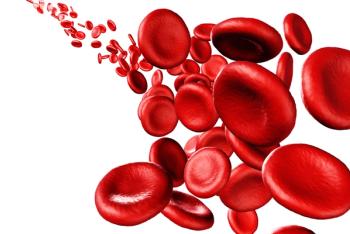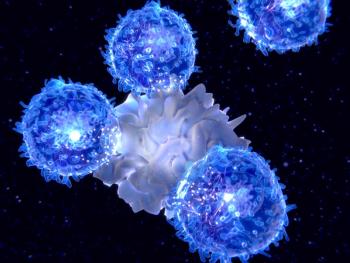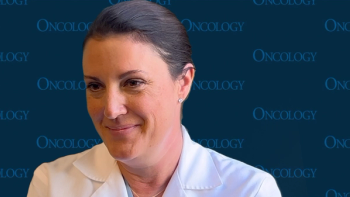
Nogapendekin Alfa Inbakicept Combo Yields Disease Control in Glioblastoma
Results from a pilot phase 2 trial showed that all 5 patients who received treatment achieved a response or had stable disease.
Nogapendekin alfa inbakicept-pmln (Anktiva) combined with natural killer (NK) cell therapy (PD-L1 t-haNK) and Optune Gio Tumor Treating Fields, demonstrated disease control in patients with second-line recurrent glioblastoma, according to a press release from the developer, ImmunityBio.1
A total of 5 patients have received treatment. Of them, 3 achieved responses and 2 are reportedly at near complete response; the remaining 2 patients have stable disease to date. The disease control rate was 100%.
The treatment also increased absolute lymphocyte count in all 5 patients who had experienced lymphopenia after standard-of-care radiation and chemotherapy.
Results came from the pilot, open-label, phase 2 QUILT-3.078 trial (NCT06061809) that evaluated nogapendekin alfa inbakicept with PD-L1 t-haNK and bevacizumab (Avastin) in patients with recurrent or progressive glioblastoma.2
It was noted that glioblastoma historically has a single-digit 5-year survival rate for patients who are 45 years or older. These promising results were encouraging enough to the developer that they anticipate planning a phase 2 trial in second-line glioblastoma to further evaluate this combination.
“In my years of treating patients with glioblastoma, I have never experienced these near complete responses as well as the rapidity of the response as seen in these patients to date,” said Dr. Simon Khagi, the medical director of Neuro-Oncology at the Hoag Family Cancer Institute, and the principal investigator for this study, in the press release.1 “There has been little advance in therapy for decades for glioblastoma. This chemotherapy-free, immune-stimulating combination approach with [nogapendekin alfa inbakicept] is highly promising and may represent a fundamental advance in therapy in patients with tumors of the brain.”
The trial has an overall estimated enrollment of 20 patients with glioblastoma, though 5 have currently been treated. Therapy consisted of subcutaneous nogapendekin alfa inbakicept at 1 mg on days 1 and 15 of each 28-day cycle, intravenous PD-L1 t-haNK at ~2 x 109 cells/infusion on day 1 and 15 of each cycle, and intravenous bevacizumab at 10 mg/kg on days 1 and 15 of each cycle. The maximum treatment period was 76 weeks or 19 cycles.
Eligible patients were 18 years or older, had histologically confirmed glioblastoma that progressed after initial therapy or therapies, confirmed progressive or recurrent disease, prior first-line therapy with at least radiotherapy and temozolomide (Temodar), a life expectancy of more than 12 weeks, and a Karnofsky performance status of 70 or higher. Additional criteria include full recovery from prior treatment-related toxicities to grade 2 or lower, fully healed craniotomy, ability to attend required study visits, and agreement to practice effective contraception.
Reasons for exclusion include serious uncontrolled concomitant disease that would contraindicate the use of the investigational drugs used in the study, prior anticancer treatment of glioblastoma with bevacizumab or other anti-angiogenic treatment, current chronic daily treatment with systemic corticosteroids, history of surgery within the past 28 days, history of recent hemoptysis, receipt of therapeutic anticoagulation, history of organ transplant requiring immunosuppression, history of active inflammatory bowel disease, inadequate organ function, and clinically significant cardiovascular disease or myocardial infarction within 6 months of first study medication.
The trial’s primary end points included incidence of treatment-emergent adverse effects (TEAEs) and serious AEs; incidence of clinically significant changes in comprehensive metabolic panel, hematology blood panel, urinalysis, temperature, heart rate, respiratory rate, blood pressure, and oxygen saturation; safety assessed by cytokine levels; and immune effector cell-associated neurotoxicity syndrome. Secondary end points were pharmacokinetics and immunogenicity of nogapendekin alfa inbakicept and PD-L1 t-haNK.
“Although they are early, these results are very encouraging, given the high risk and low survival rates associated with [glioblastoma]. There is compelling evidence that [nogapendekin alfa inbakicept’s] mechanism of proliferating NK and T cells plays an important role in treating patients with cancer, independent of tumor type,” said Patrick Soon-Shiong, MD, the founder, executive chairman, and global chief scientific and medical officer at ImmunityBio.1 “We believe these preliminary results in patients with [glioblastoma], whose lymphocyte counts (NK and T cells) are low as a consequence of radiation and chemotherapy after first-line treatment, can be rescued following [nogapendekin alfa inbakicept] and NK cell therapy, and warrant the rapid expansion of this study in recurrent glioblastoma.”
References
- Initial data shows 100% disease control in 5 out of 5 patients with recurrent glioblastoma with two patients in near complete response treated with ImmunityBio’s ANKTIVA®, NK cell therapy plus Optune Gio® device. News release. ImmunityBio. August 26, 2025. Accessed August 27, 2025. https://tinyurl.com/u735w7c9
- N-803 and PD-L1 t-haNK combined with bevacizumab for recurrent or progressive glioblastoma. ClinicalTrials.gov. Updated August 1, 2025. Accessed August 27, 2025. https://tinyurl.com/y83ppzxu
Newsletter
Stay up to date on recent advances in the multidisciplinary approach to cancer.























































































